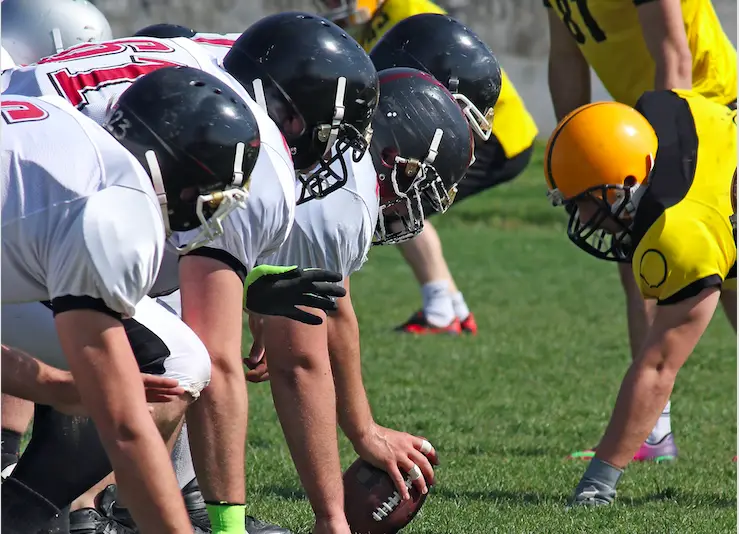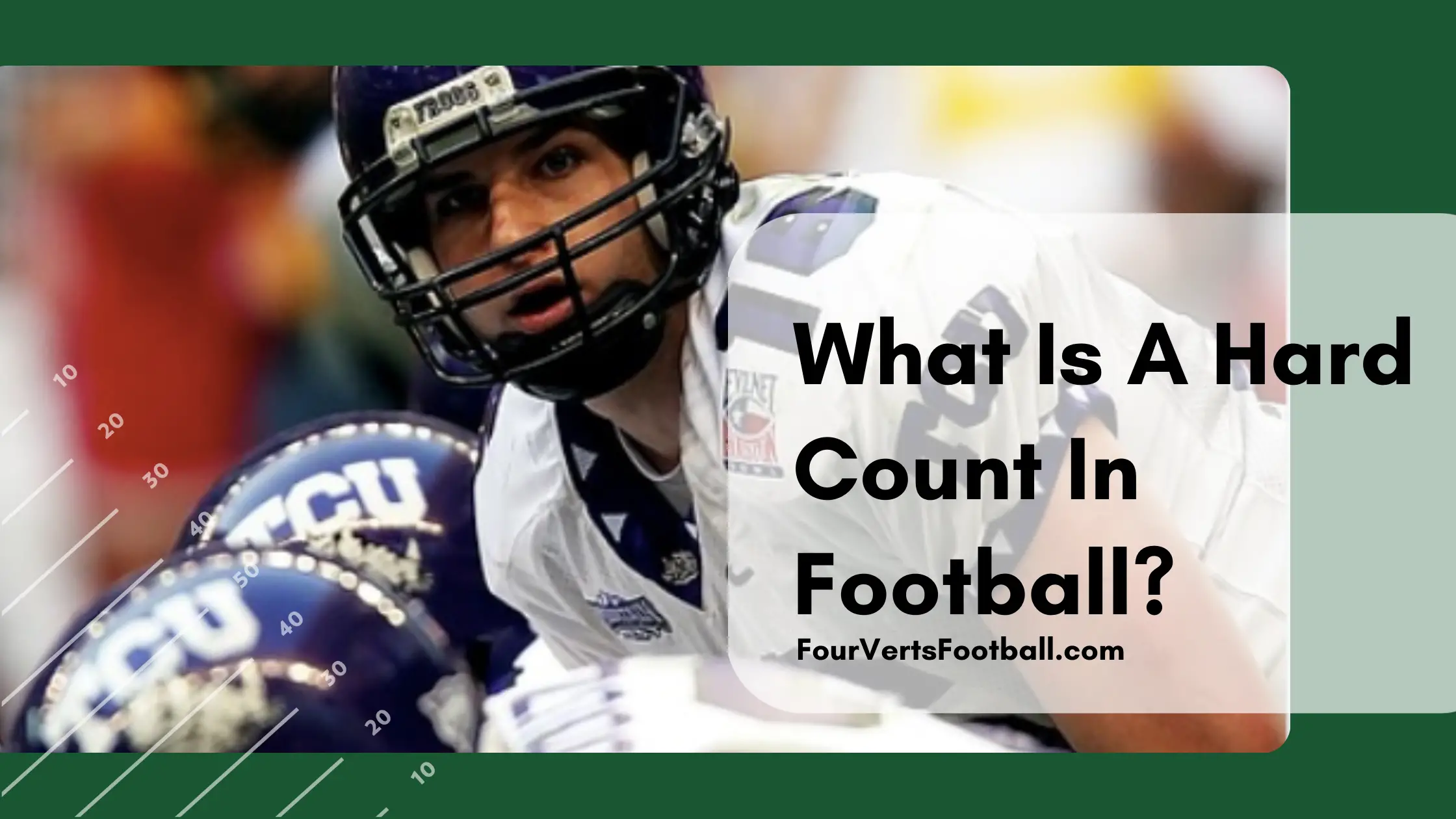A hard count in football occurs when the quarterback intentional changes the rhythm, volume, or cadence of his audible snap in order to get the defense to jump offside.
In short, the quarterback is using his voice to let the defense believe they know when the ball is going to be snapped. The trick is the quarterback has already planned with his center to not snap the ball during his hard count.
Benefits Of A Hard Count In Football
The purpose of the hard count is to trick the opponent to move before the ball does. If the opponent jumps offside before the ball is snapped he will earn himself an encroachment penalty.
Once the player jumps offside the offense can either accept the penalty and take five yards. Or attempt to snap the ball just after the player jumps in order to get a free play.
Encroachment/ Offside
If the defense receives an encroachment or offside penalty the offense will be awarded five yards. This is why a hard count is often used in short-yardage situations.
You will often notice on fourth downs under five yards teams will send out their offense in an attempt to get the defense to jump offside.
This is because a penalty in this situation would lead to a first down. This makes a hard count a handy tool to have under the belt for an NFL QB.
Free Play
If the player is offside yet the quarterback isn’t in immediate danger you will find that the referees will allow the play to go on. Since a penalty has been called against the defense the offense doesn’t have any risk in this play.
The referees will base the decision of whether or not to keep the play going based if the defender has a clear path to the quarterback. If a defender has a clear path the play will be blown dead.
This is because this can easily result in an injury to the quarterback. But if the defender does not have a clear path to the quarterback then the play will go on.
If they throw an interception on a free play the offense will accept the penalty which wipes out the interception and awards the offense a five-yard penalty.
If the offense completes a long play they will then decline the penalty and move the ball to where their player was tackled.
The free play is an incredibly helpful play to have in your repertoire if you can pull it off.

What Happens When A Hard Count Fails
The purpose of a hard count is to trick the opposing team into jumping offside prior to the play. The issue is the majority of the time this is attempted the opposing team does not go offisde.
This raises the question, what does a team do when the hard count doesn’t work?
When a team fails a hard count there are left with three options run the play, call a timeout, take a delay of game.
Oftentimes teams will attempt a hard count yet still have a real play ready to go. When this is the case teams will first attempt the hard count and once that doesn’t work they will switch to the real snap count.
They will then snap the ball after the real cadence and the play will be conducted.
The most common option when a hardcount fails is to use a timeout. Teams will often try this fake cadence all the way to the end of the play clock and right before it hits zero a timeout will be called.
The other option a team may choose is to take the delay of game penalty. There are two situations in which teams tend to go this route.
The first comes when a team is about to punt the ball and the five yard penalty will allow the punter more room to place a punt when distance isn’t an issue.
The other situation arises when a team is attempting a very short field goal in which the kicker may be just as comfortable kicking from a few yards back.
Hard Count, Soft Count, And Silent Count
Now that you have heard the term hard count you may be wondering what these other terms mean as well.
A soft count is simply your typical audible calls before you snap the ball. In other words, the soft count is the same as a hard count except there is no trickery built in to get the defense to jump offside.
You are simply communicating verbally with your team so they know when the play will start.
A silent snap count on the other hand uses no audible signals at all. This type of count relies on physical signals. Such as taps on the shoulder or the QB stomping their feet as their count.
This style of count is most typically used in short-yardage situations to catch a team by surprise. Or when the crowd noise is too loud to effectively communicate with verbal signals.

